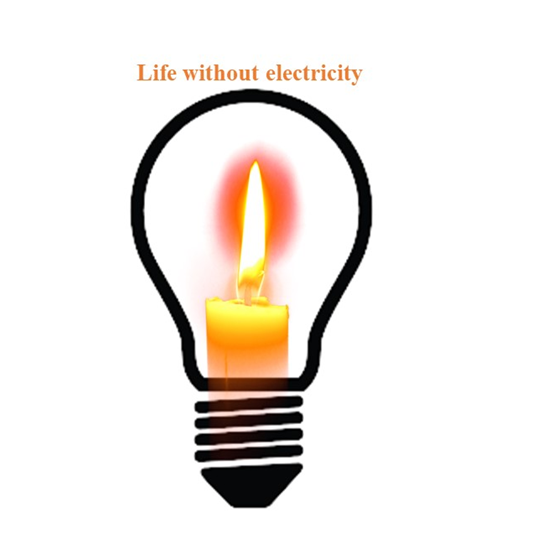Conductor (ELECTRICal)
The term "conductor" has many different meanings in different contexts, but in electrical terminology, it refers to a material that allows electricity to pass through it. Those materials are usually metals, which have free electrons in them that come into motion when an external force (electromotive force) is applied between their terminals. The tendency to pass electricity through it is known as conductivity. This conductivity depends upon the resistance offered by the material. And based on their conductivity, the electrical conducting materials have been classified into conductors, semiconductors, and insulators.
Recalling a few
chemistry concepts, "an atom" is the basic constituent of all matter
(whether elements or compounds), according to the modern atomic model theory.
According to Rutherford's atomic model, an atom consists of a nucleus in the
centre surrounded by orbiting electrons (negatively charged), as seen in the
below figure. The electrons have a negative electric charge of 1.602*10-19
and a negligible mass of 9.107*10–31, whereas the nucleus has
a higher mass than electrons. And the nucleus is comprised of two particles:
protons (positively charged) and neutrons (neutrally charged), whose mass is
1800 times that of electrons (i.e., the mass of the nucleus equals 1800 times
the electron). Similarly, protons have a positive electric charge, the same as
that of electrons but with the opposite polarity.
Energy band… In an element, an electron will have different energy levels based upon different charge conditions. The energy bands are the continuous variations of the energy levels of the electron. In general, this energy band is used to identify the electrically conductive capability of a material and is classified into two distinct bands, viz., the conduction band and the valance band, in which electrons are usually present. Separating these energy bands, an energy gap exists where normally no electron is present, which is termed the "forbidden energy gap." The description of those energy bands is as follows:
1.The valance band
The energy band in
which the electrons are tightly bound and the electrons present in the valance
band are known as valence electrons, which are found in the outermost shell of
an element. Electrons will be present in this energy band unless an external
force (electromotive force or thermal conduction) is applied. The energy
occupied by the valence band is greater than other energy bands comparatively,
and the energy of the electrons is much lower (i.e., more negative energy).
2.Band of Conduction
At room temperature
or when an external force (electromotive force) is applied, the valence
electrons in the valance band become loosely bound to the nucleus and are
allowed to leave the valance band freely towards the conduction band within the
atom and subsequently to the adjacent atom, and hence these free electrons are
the reason for producing electric current in a conductor. Therefore, these
electrons in the conduction band are also known as "conduction
electrons." The energy occupied by the conduction band is lower than other
energy bands comparatively, and the energy of the electrons is higher (i.e.,
more positive energy).
3.Forbidden Energy Gap
The gap between the
valance band and the band of conduction is called the "Forbidden Energy
Gap." As the name implies, there is no energy in this band, and thus no
electrons are present. The forbidden energy gap is measured in electron volts
(eV) and is also known as energy separation between valance and conduction
bands. If the forbidden energy gap is higher, the electrons that are present in
the valance band are very tightly bound to the nucleus, and hence no electron
is allowed into the condnction band. Therefore, no electric current is produced
in that material. To minimize the "forbidden energy gap," an equal
amount of energy is required from an external source.
Based on the energy bands mentioned above, for electrical conduction, the materials are classified into three, viz., conductor, semiconductor, and insulator. For a conductor, the valance band and conduction band overlap so that the valance electrons get transferred easily into the conduction band and hence the current produced is easily passed through it. For a semiconductor, the energy gap is very less which is about 1 electron Volt (eV) and lesser than 3 electron Volt (eV). While for insulators, the energy gap is very high for about >3 electron Volt (eV). Let's discuss in detail about the conductor, semiconductor, and insulator in the next article.
Thanks & Regards
ElectrinFinite & Team



Comments
Post a Comment